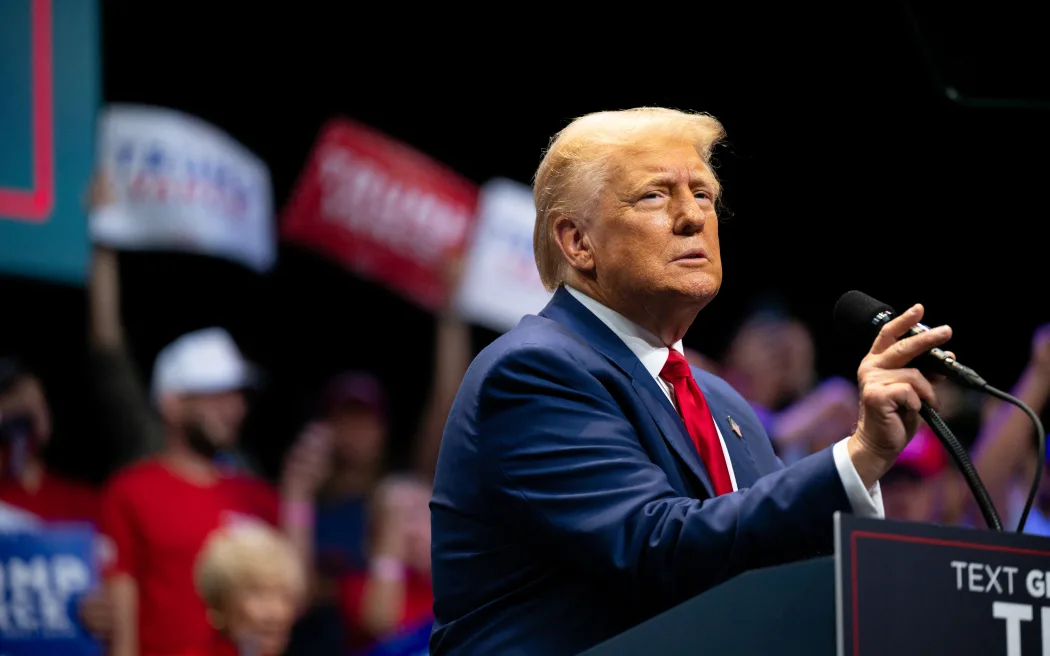1K
By Daniel Adaji
President Donald Trump has imposed a 14 per cent tariff on Nigerian exports to the United States. The move is part of a broader strategy to implement reciprocal tariffs, which aim to match or counterbalance the duties imposed by other countries on U.S. goods.
Nigeria, which currently levies a 27 per cent tariff on American imports, now faces increased trade costs under this new policy.
Announcing the measure on Wednesday at a White House event dubbed “Liberation Day,” Trump framed the tariff policy as a decisive step toward establishing “fair trade” and revitalizing the U.S. industrial sector.
“This is one of the most important days in American history. We will supercharge our domestic industrial base, we will pry open foreign markets, and we will break down foreign trade barriers,” he said.
The new tariff regime affects over 50 countries, including key U.S. trade partners like China, the European Union, India, and Japan, alongside developing economies in Africa, Asia, and Latin America. Nigeria, Ghana, Ethiopia, and Mauritius are among the African nations facing revised U.S. tariffs.
Nigeria’s trade with the U.S. totaled N31.1tn between 2015 and 2024, with imports accounting for N16.4tn—equivalent to 8.7 per cent of Nigeria’s global exports, according to data from the National Bureau of Statistics.
Despite these figures, Nigeria’s exports to the U.S. have seen a decline in recent years, largely due to reduced American demand for Nigerian crude oil.
In 2022, the country exported approximately $4.9bn worth of goods to the U.S., up from $3.6bn in 2021. However, in 2023, exports slightly declined to $4.86bn.
Crude oil and natural gas remain Nigeria’s primary exports, alongside smaller shipments of cocoa products, sesame seeds, ginger, spices, solid minerals, metals, and semi-processed goods.
While Nigeria is not among the highest tariff-imposing nations, the U.S. government’s new approach signals a departure from previous trade agreements that offered preferential terms to developing economies.
Mauritius, for instance, faces one of the harshest adjustments, with a newly proposed 40 per cent tariff on its exports due to its existing 80 per cent tariff on U.S. goods. Ghana and Ethiopia, which levy lower tariffs of 17 per cent and 10 per cent respectively, will see corresponding or near-matching U.S. tariffs in return.
For Nigeria and other African countries that rely on U.S. trade preferences under initiatives like the African Growth and Opportunity Act, the new tariff structure presents significant economic challenges.
Many nations may need to reassess their own tariff policies or seek renegotiations to maintain their foothold in the U.S. market.
At the core of Trump’s trade policy is the principle of “reciprocal tariffs,” where the U.S. imposes duties equivalent to half of the rates applied by other countries on American exports.
This approach is particularly targeted at nations like Vietnam, Cambodia, and Bangladesh, which impose tariffs exceeding 70 per cent on U.S. goods. Under the revised system, U.S. tariffs on their exports now range between 37 per cent and 49 per cent.
While AGOA provides duty-free access to certain Nigerian exports, crude oil continues to dominate trade between the two nations.
With Trump’s latest tariff policy, Nigeria and other affected countries may need to explore alternative markets or renegotiate trade agreements to mitigate the impact of these new barriers.



